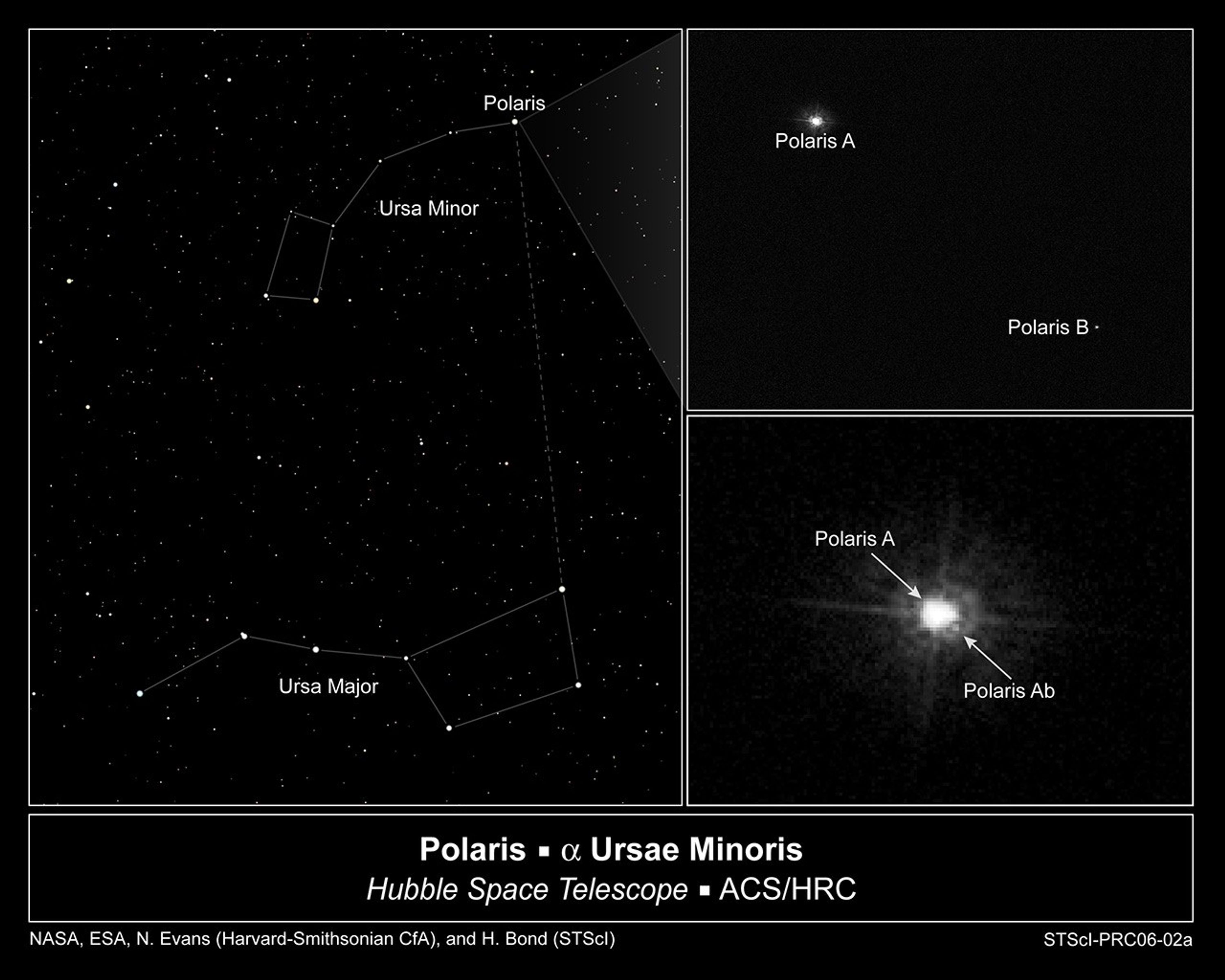1 min read
Artist’s Concept of Polaris System

This is a view from within the Polaris triple star system. The North Star, Polaris A is a bright supergiant variable star.
Just above Polaris is a small companion, Polaris Ab, which is 2 billion miles from Polaris. Much farther away, near the top of the illustration, is the wide companion Polaris B. Polaris B is located approximately 240 billion miles from Polaris A. The two companion stars are the same temperature as Polaris A, but are dwarf stars.
The wide companion star is visible in small telescopes. It was first noticed by William Herschel in 1780. The close companion, Polaris Ab was known to exist from measurements of a wobble in Polaris, caused by the gravitational tug of its companion, but has only been seen directly now using Hubble.
- Object NameObject NameA name or catalog number that astronomers use to identify an astronomical object.Polaris, Alpha Ursae Minoris, North Star
- Release DateJanuary 9, 2006
- Science ReleaseThere’s More to the North Star Than Meets the Eye
- Credit
Related Images & Videos

Hubble Images Polaris's Companion
This sequence of images shows that the North Star, Polaris is really a triple star system. For the first time, the close companion of Polaris has been seen directly. The left frame shows Polaris's location very close to the position of Earth's north celestial pole in Ursa Minor...

Artist's Concept of Polaris System - Annotated
This is a view from within the Polaris triple star system. The North Star, Polaris A is a bright supergiant variable star. Just above Polaris is a small companion, Polaris Ab, which is 2 billion miles from Polaris. Much farther away, near the top of the illustration, is the...
Share
Details
Claire Andreoli
NASA’s Goddard Space Flight Center
Greenbelt, Maryland
claire.andreoli@nasa.gov































